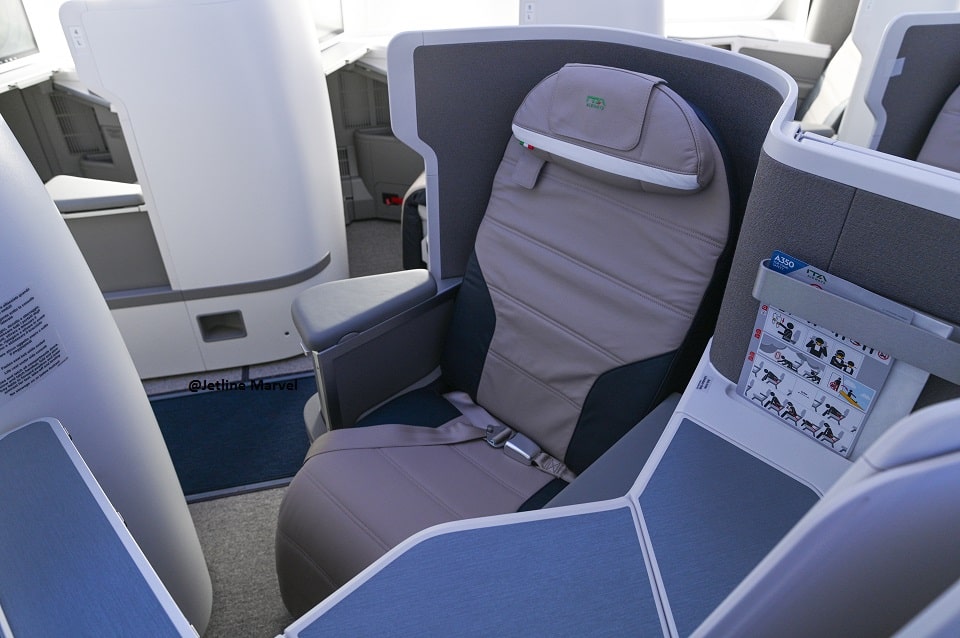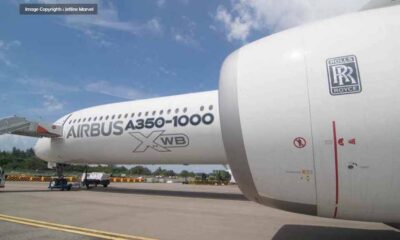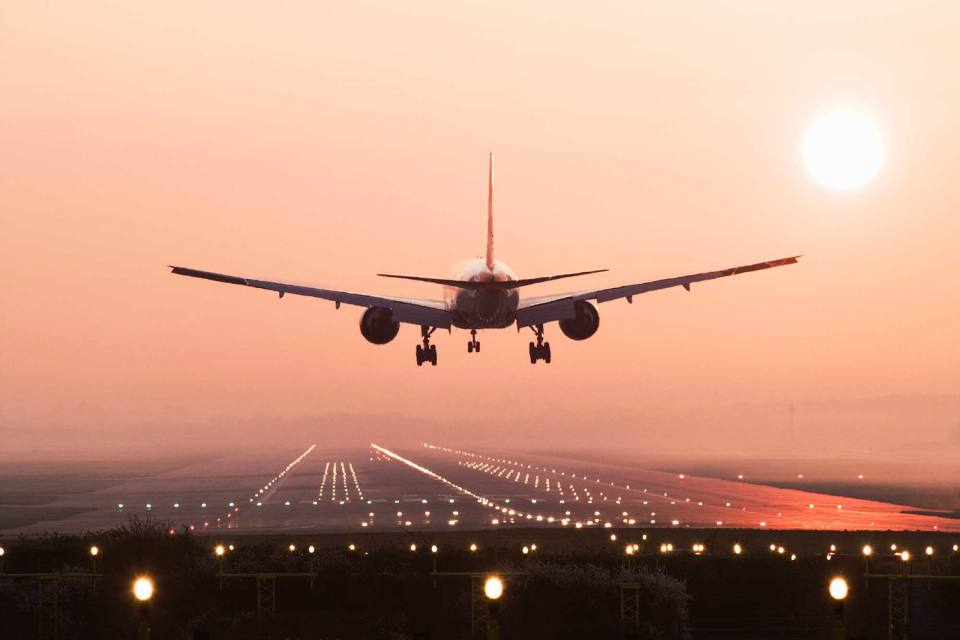Aerospace
How an aircraft seat is made : Everything You Need To Know

We’ll review the design of airplane seats in this post. The majority of aircraft manufacturers, including Boeing, Airbus, Embraer, and Bombardier, are constantly concerned with providing passengers with the most comfortable seats. Nonetheless, it should still be as safe as possible and as light as possible for aircraft.
According to the demands of the airlines, aircraft manufacturers must have various levels of seat configuration. Some airlines prioritize economy seats, while others prioritize first-class and business-class seating arrangements. The passenger’s choice of ticket price completely determines the seat assignment they receive; if they pay more, they receive a higher level of comfort.
Airbus Airspace has designed seats that increase the level of comfort within the same and provide feedback to the design team for future improvements in the seats based on the comfort of the passengers. We anticipate that the majority of passengers on the flight will obey the seatbelt sign. With the new design, if someone forgets to fasten their seatbelt, the pilot will be notified. This definitely aids airline pilots in better understanding the safety of the passengers.
Aircraft seats in Airbus aircraft are typically designed and manufactured by specialized seat manufacturers and then integrated into the aircraft during the assembly process. Airbus offers a range of seating options for its aircraft, including economy, premium economy, business, and first-class seats. These seats are designed with a range of features such as adjustable headrests, footrests, and lumbar support, as well as options for in-flight entertainment systems and power outlets.
In terms of sensors, Airbus aircraft use a wide range of sensors throughout the aircraft to monitor and control various systems, including the flight control system, engines, fuel system, hydraulic system, and more. These sensors are typically connected to onboard computers and avionics systems, which use the data from the sensors to make decisions and provide feedback to the pilots.
How the seats on airplanes are made.
Aircraft seats are typically manufactured using a combination of advanced materials and specialized manufacturing techniques to ensure they meet strict safety and performance standards. Here’s a general overview of the manufacturing process:
- Design and Engineering: The seat design is typically created using computer-aided design (CAD) software, which allows engineers to create 3D models of the seat and test its performance in various scenarios.
- Materials Selection: Aircraft seats are typically made from lightweight materials such as carbon fiber composites, aluminum, and high-strength alloys. These materials are chosen for their strength, durability, and weight-saving properties.
- Cutting and Shaping: Once the materials are selected, they are cut and shaped using advanced manufacturing techniques such as laser cutting, water jet cutting, or CNC machining. This allows for precise cutting and shaping of the various seat components.
- Assembly: The various seat components (such as the frame, cushions, armrests, and headrests) are then assembled together using specialized tools and equipment. This typically involves riveting, welding, or bonding the various components together to create a sturdy and durable seat.
- Testing and Certification: Once the seat is assembled, it undergoes a rigorous testing and certification process to ensure it meets all applicable safety and performance standards. This may involve testing for impact resistance, fire resistance, durability, and other factors.
- Installation: Finally, the seats are shipped to the aircraft manufacturer or airline for installation in the aircraft. This typically involves a team of technicians installing the seats in the aircraft and ensuring they are properly secured and functioning as intended.
Overall, the manufacturing process for aircraft seats is highly specialized and involves advanced materials, precision engineering, and rigorous testing to ensure the highest levels of safety and performance..

Aerospace
Indigo will soon launch Air Taxi Service in India

InterGlobe Enterprises, the parent brand of IndiGo, is set to revolutionize travel in India with its upcoming air taxi service.
Scheduled for a potential launch in 2026, this innovative venture promises a seamless journey for passengers between two bustling hubs. Delhi and Gurgaon in Haryana. The forthcoming service is projected to revolutionize the daily commute, offering passengers a swift aerial journey covering the distance in a mere 7 minutes.
This remarkable efficiency contrasts starkly with the conventional 90-minute drive, underscoring the immense time-saving potential for commuters. The anticipated fare, ranging from Rs 2,000-3,000, makes this innovative mode of transport not only swift but also remarkably competitive in pricing.
At the heart of this ambitious endeavor lies a strategic partnership with Archer Aviation, a pioneer in electric vertical takeoff and landing (eVTOL) aircraft technology. Under this collaboration, Archer will supply 200 state-of-the-art eVTOL aircraft, representing an investment of US$ 1 billion. These cutting-edge aircraft, capable of accommodating up to four passengers alongside the pilot, epitomize the future of sustainable air travel.
Powered by six battery packs, Archer’s eVTOL aircraft boast rapid charging capabilities, enabling a swift turnaround between flights. With a charging time of just 30-40 minutes, these eco-friendly aircraft ensure minimal downtime, maximizing operational efficiency.
Similar services are anticipated to be introduced by the joint venture in Bengaluru and Mumbai as well. Nevertheless, the service rollout period has not yet been made public by the company. Next year, it is anticipated to get its certification. Following this, the company will start the certification procedure with the Directorate General of Civil Aviation (DGCA).
Aerospace
Which is bigger 777x or 787 aircraft ?

The 777X is a new series of the Boeing 777 family and is designed to be larger and more efficient than its predecessor. It features two variants: the 777-8 and the 777-9, being the larger of the two.
The Boeing 777X emerges as the larger sibling within the Boeing family, representing a significant leap forward in both size and efficiency. Comprising two variants, the 777-8 and the 777-9, the latter takes the crown as the larger of the two. With its expansive fuselage and impressive wingspan, the 777X is tailored for long-range journeys and boasts a substantial passenger capacity.
On the other hand, the Boeing 787, affectionately known as the Dreamliner, occupies a niche in the market as a smaller yet formidable aircraft designed for medium to long-range flights. Its distinguishing feature lies in its composite fuselage, a technological marvel that renders it lighter and more fuel-efficient compared to conventional aluminum counterparts. The Boeing 777X is larger than the Boeing 787 aircraft.
When it comes to passenger capacity, the 777-9 reigns supreme, typically accommodating a sizeable contingent of 400-425 passengers in its standard configuration. In contrast, the 787, with its more modest dimensions, typically carries between 240-290 passengers, depending on the variant and layout.
One of the remarkable innovations introduced with the 777X is its folding wingtips, a feature designed to address the logistical challenges of accommodating such a large aircraft in conventional airport gates. These folding wingtips enable the 777X to retract its wings, allowing it to fit into gates designed for smaller aircraft while still reaping the benefits of an extended wingspan during flight, thereby enhancing fuel efficiency and operational flexibility
Aerospace
China Secures Production Certificate for Mass Production of Pilotless eVTOL Aircraft

The first passenger-carrying pilotless electric vertical takeoff and landing (eVTOL) aircraft in the world, the EH216-S, has received the Production Certificate for its eVTOL aircraft from the Civil Aviation Administration of China (CAAC).
This is a significant milestone for EHang Holdings Limited, the leading UAM technology platform company in the world. This outstanding accomplishment is another big step towards mass manufacturing for the eVTOL aircraft and the ensuing commercial operations, building on the ground-breaking acquisition of the Type Certificate and the Standard Airworthiness Certificate for the EH216-S.
The PC is a crucial certificate that the aircraft maker receives from the CAAC, the country’s aviation authority. By obtaining this certificate, EHang has demonstrated that it has set up a quality management system for mass production that satisfies the airworthiness regulation standards set forth by the CAAC, and the company has been given permission to continue producing mass quantities.
It is also a strong guarantee of the calibre of the goods made by EHang. Raw materials, supplier management, manufacturing organisation, production quality control, aircraft pre-delivery test, after-sales repair and maintenance, etc. are all included in the mass production quality management system for the EH216-S.
To ensure that every aircraft and its components that roll off the production line strictly adhere to the approved type design and safety requirements, the system sets clear guidelines and documentation for every step in the production procedure. This ensures comprehensive traceability and safety control.


























